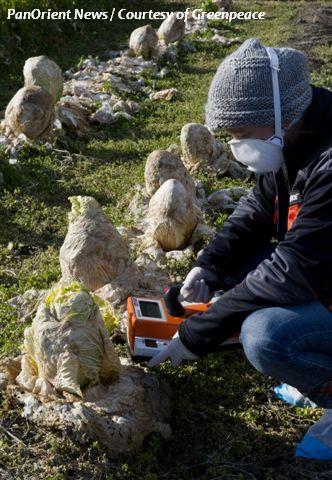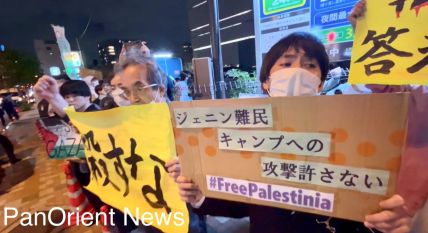|
|
Environment
Greenpeace Fukushima Radiation Monitoring Teams Call for Further Evacuation
Monday, April 11, 2011

Tokyo- (PanOrient News) Following extended monitoring of the area outside the exclusion zone that surrounds the stricken Fukushima nuclear complex by two specialist radiation monitoring teams, Greenpeace is calling for the greater Fukushima area to be given official protective status and for the evacuation of pregnant women and children from high risk areas in Fukushima City and Koriyama.
Greenpeace said in a statement today that the Japanese government should act as a matter of urgency by cleaning up or evacuating certain radioactive hot spots, undertaking a comprehensive assessment of the spread of contamination and all different exposure routes to the population, releasing a long-term plan for protective measures to safeguard the population from further exposures, and compensating the public for loss of livelihoods
The international environmental organization also called on the Japanese government to fully evacuate several radiation hotspots, including those engulfing towns such as Iitate and Namie, after analysis of data collected by the monitoring teams suggested widespread cesium contamination.
Radioactive hotspots are places where radiation levels are significantly higher (higher than 4 microSievert per hour and should be evacuated and/or cleaned up as a matter of priority, Greenpeace said.
“People in the greater Fukushima area could potentially receive radiation exposure of more than 5 milliSieverts per year, which was the threshold for evacuation at Chernobyl, following the 1986 disaster”, said Greenpeace radiation expert Rianne Teule.
Greenpeace radiation monitoring teams recorded radiation levels of 4 microSieverts per hour in a playground in Fukushima City, and 2.8 microSieverts per hour at a shrine in Koriyama. These levels are high enough to expose people to the maximum yearly dose of radiation allowable in a matter of weeks. Soil analysis by Kyoto University indicates that more than 80 percent of the radiation in these hotspots is from cesium isotopes, which will persist in the local environment for several years.
The teams also found radiation levels above official limits in vegetables collected from gardens near Fukushima City, Koriyama, and Minamisoma, and from a supermarket in Fukushima City. At least one of the vegetable samples taken from the region could be categorized as radioactive waste.
“Our results have revealed serious issues with food contamination in the Fukushima area”, continued Teule - the authorities need to make consumers and farmers acutely aware of this, by stepping up food and soil testing and giving the greater Fukushima area a protective status.”
“With over one million people living in the greater Fukushima City and Koriyama area, it is not acceptable for the authorities to continue ignoring the seriousness of the situation”, concluded Greenpeace Japan Executive Director Junichi Sato. “The government needs to not only provide people with clear advice on how to protect themselves from the contamination threats, they need to start taking real and meaningful action by declaring the official protective status”.
Photo: Filed testing in Minimasoma. Christian Aslund/Greenpeace
PanOrient News
© PanOrient News All Rights Reserved.
|
|

